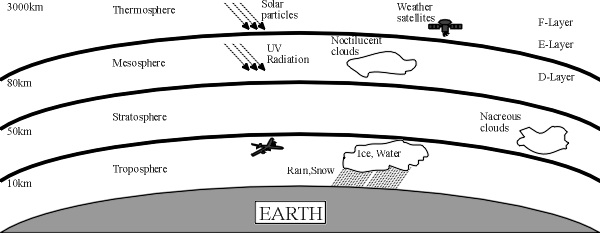

The aim of this section is to give a concise introduction to non-experts to terrestrial radiowave propagation in the bands above 30MHz. It will cover the usual basics as well as diversity, multipath, atmostpheric ducting in abnormal weather, reflections from aircraft, etc etc. The intention is to give a grounding, it will not go into great detail - there are plenty of excellent text books for that. What it will do is give the basic mechanisms and formulae needed to estimate the importance of each propagation mechansim
If there is any area of non-clarity, please let me know and I will try and do better.
The Detailed propagation course
HTML Propagation Fundamentals - Fixed Link Propagation - Mobile Propagation
PDF Fixed Links Propagation - Mobile propagation
Short and simple (the old tutorial)
Propagation in Free Space - Absorption by Atmospheric Gases - Diffraction over Terrain - Refraction and Ducting - Reflections - Troposcatter - Rainscatter - Sporadic E
This tutorial will be mainly concerned with the effects of the Troposphere on radiowave propagation, this is the lower layer, which extends up to about 10-20km above the surface. This is the region where we live and breathe and is the region in which our terrestrial radiowaves must travel between transmitter and receiver. Well above the troposphere is the Ionosphere. This region is particularly important for HF and VHF communications, but is not the subject of this tutorial.

Atmospheric Layers
I hope someone finds it useful!
further tutorial resources can be found via google, ones find particularly useful are those by:
Dr David Jefferies on Antennas
© Mike Willis December 26th, 2006